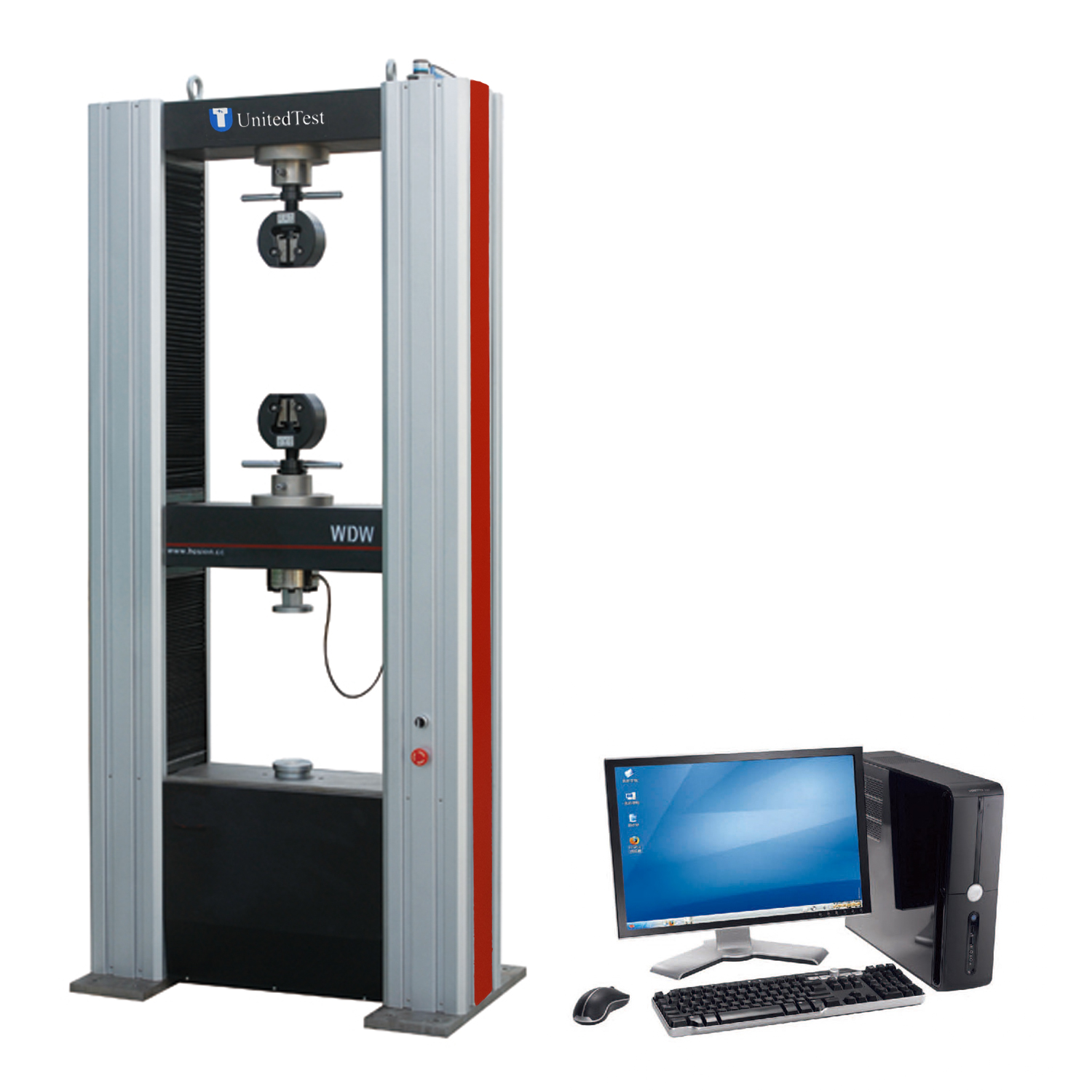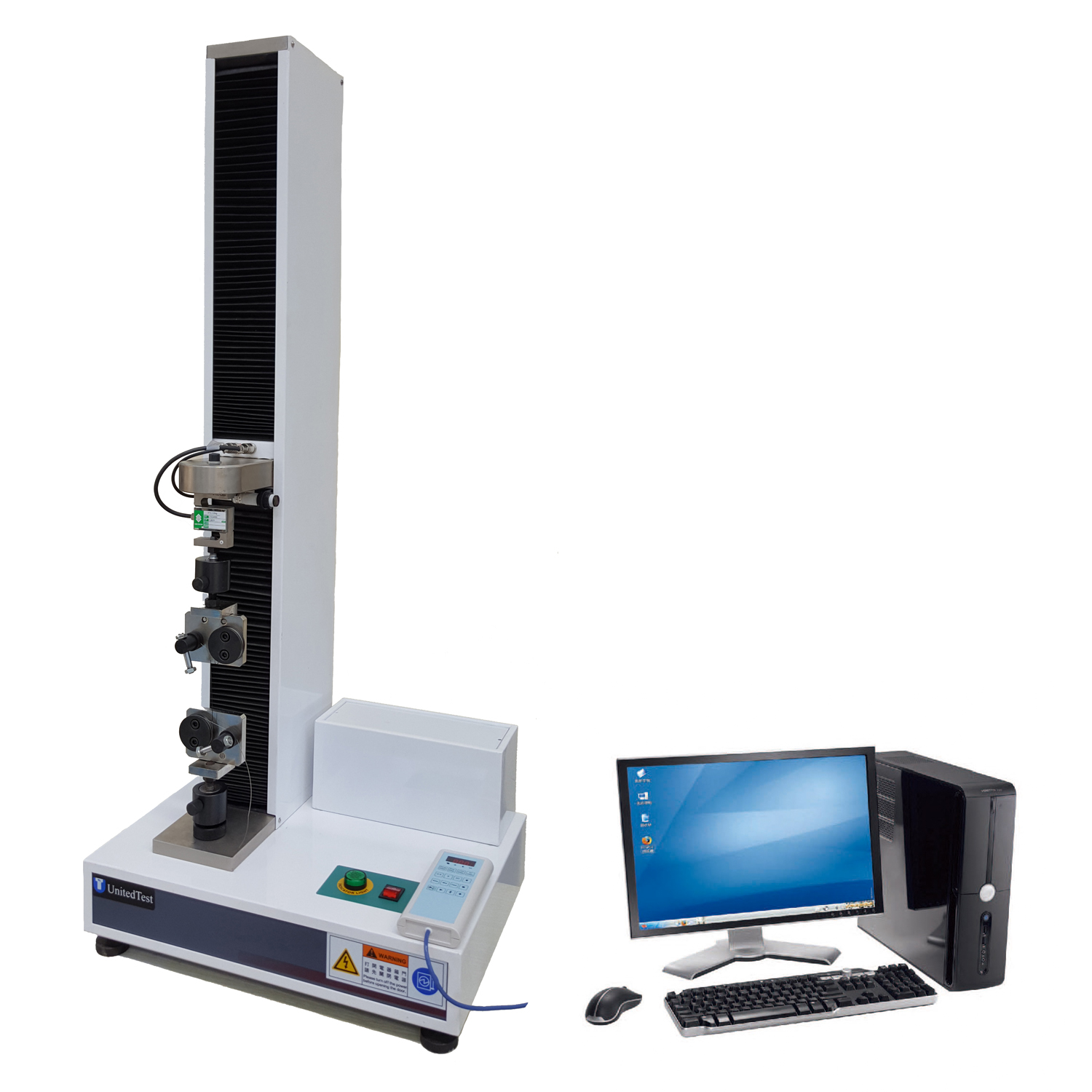Complete guide of T-Peel Test for Adhesives ASTM D1876
ASTM D1876: Standard Test Method for Peel Resistance of Adhesives (T-Peel Test)
The T-peel test is a standardized testing method used to evaluate the adhesive strength between two flexible materials. This method involves vertically fixing the ends of a specimen to a tensile testing machine and applying a peeling force at a constant speed to determine the force required to separate the adhesive from the substrate interface. The test results are expressed as the average peeling force per unit width. According to standards such as ASTM D1876 and GB/T 2791-1995, this method is applicable to flexible materials including composite films, pressure-sensitive adhesive tapes, and automotive interior bonding components. Testing parameters include a separation rate of 100 ± 10 mm/min, a minimum peeling length of 125 mm, and laboratories need to be equipped with universal materials testing machines and specialized fixtures to perform standardized operating procedures.
| Test standard | ASTM D1876, GB/T 2791, ISO 8510-2 |
| Application fields: | bonding/coating/sealing and other industrial fields |
| Test subject | adhesive samples for bonding flexible materials to flexible materials |
| Key equipment to use | universal material testing machine, tensile testing machine |
| Test parameters | 100±10mm/min rate |
Testing Principles and Methods
Through the clamping of samples to form a T-shaped structure, a vertical separation force is applied to the adhesive interface using a testing machine. When two pieces of bonded flexible materials (typically 0.05mm thick metal sheets or polymer films) are stretched, the peeling force is transmitted along the adhesive line and ultimately leads to interface separation. This method is applicable to bonding systems such as pressure-sensitive adhesive tapes with substrates and between composite film layers, and the average peel strength can be obtained through force-displacement curves.
Application Fields
In the packaging industry, this method is used to evaluate the bonding reliability between food composite film layers, preventing delamination during storage. In the automotive manufacturing industry, T-type peel testing assesses the durability of interior materials and adhesives, while in the electronics sector, it is applied to quality monitoring of adhesive layers in flexible circuit boards. The GB/T 2792 standard implemented in 2015 standardized the testing rate to 300mm/min, and the updated testing regulations in 2025 introduced high-temperature/low-temperature peel stability testing.
Test Steps and Parameters
1. Sample preparation: Cut strip samples with a width of 25mm from the finished product, removing 12mm of non-uniform areas from the edges;
2. Equipment setup: Adjust the fixture spacing to 125mm and calibrate the load sensor of the testing machine;
3. Peeling process: Stretch at a rate of 100±10mm/min and automatically record the peeling force curve;
4. Data processing: Exclude the initial fluctuation data for the first 25mm and take the average force value over the middle 100mm interval.
Influencing Factors
For every 0.1mm increase in adhesive layer thickness, the peeling strength decreases by 15-20%. When the test temperature rises from 23°C to 60°C, the peeling strength of polyurethane adhesive decreases by 30-40%. If the sample width exceeds 30mm, edge effects may occur, leading to a measured data deviation of up to ±12%.
Result Processing and Analysis
The peeling strength calculation formula is: P = F/b (P is the peeling strength, F is the average force value, b is the sample width). A dynamic mechanical analyzer can assist in observing the microscopic failure modes at the adhesive interface, and scanning electron microscope images can reveal the morphological differences between cohesive failure within the adhesive layer and interfacial peeling. According to industry statistics from 2025, the repeatability error of this method in composite film testing is ≤5.3%.


ASTM D1876 Peel Resistance of Adhesives, T-Peel Test, ASTM D1876 Peeling testing machine
Beijing United Test Co.,Ltd. export@unitedtest.com offer the testing equipment and test fixture of ASTM D1876 Peel Resistance of Adhesives (T-Peel Test). Contact us now : export@unitedtest.com, unitedtest@hotmail.com












